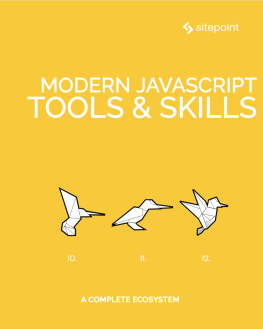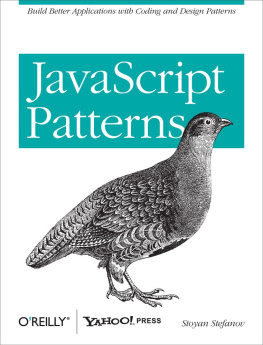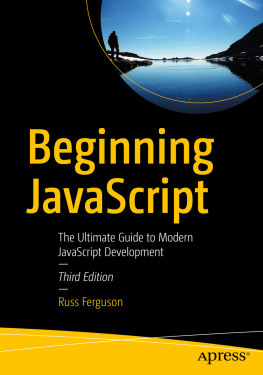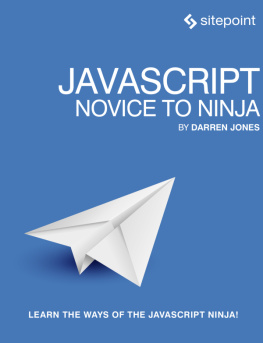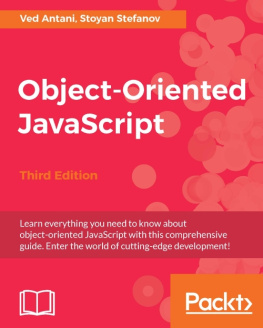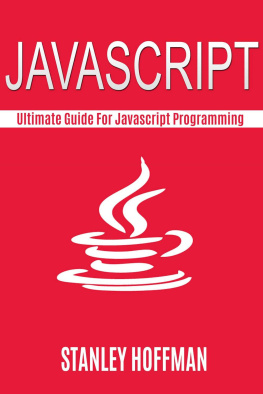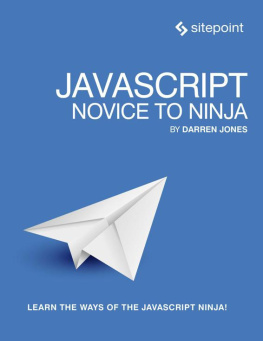
Caffe Molinari
Caf Allong, also called Espresso Lungo, is a drink midway between an Espresso and Americano in strength. There are two different ways to make it. The first, and the one I prefer, is to add a small amount of hot water to a double or quadruple Espresso Ristretto. Like adding a splash of water to whiskey, the small dilution releases more of the complex flavours in the mouth.
The second way is to pull an extra long double shot of Espresso. This achieves approximately the same ratio of oils to water as the dilution method, but also releases a different mix of flavours due to the longer extraction. Some complain that the long pull is more bitter and detracts from the best character of the coffee, others feel it releases even more complexity.
The important thing is that neither method of preparation should use so much water as to result in a sickly, pale ghost of Espresso. Moderation in all things.
Foreword by Michael Fogus
As a life-long bibliophile and long-time follower of Regs online work, I was excited when he started writing books. However, Im very conservative about books lets just say that if there was an aftershave scented to the essence of Used Book Store then I would be first in line to buy. So as you might imagine I was skeptical about the decision to release JavaScript Allong as an ongoing ebook, with a pay-what-you-want model. However, Reg sent me a copy of his book and I was humbled. Not only was this a great book, but it was also a great way to write and distribute books. Having written books myself, I know the pain of soliciting and receiving feedback.
The act of writing is an iterative process with (very often) tight revision loops. However, the process of soliciting feedback, gathering responses, sending out copies, waiting for people to actually read it (if they ever do), receiving feedback and then ultimately making sense out of how to use it takes weeks and sometimes months. On more than one occasion Ive found myself attempting to reify feedback with content that either no longer existed or was changed beyond recognition. However, with the Leanpub model the read-feedback-change process is extremely efficient, leaving in its wake a quality book that continues to get better as others likewise read and comment into infinitude.
In the case of JavaScript Allong, youll find the Leanpub model a shining example of effectiveness. Reg has crafted (and continues to craft) not only an interesting book from the perspective of a connoisseur, but also an entertaining exploration into some of the most interesting aspects of his art. No matter how much of an expert you think you are, JavaScript Allong has something to teach you about coffee. I kid.
As a staunch advocate of functional programming, much of what Reg has written rings true to me. While not exclusively a book about functional programming, JavaScript Allong will provide a solid foundation for functional techniques. However, youll not be beaten about the head and neck with dogma. Instead, every section is motivated by relevant dialog and fortified with compelling source examples. As an author of programming books I admire what Reg has managed to accomplish and I envy the fine reader who finds JavaScript Allong via some darkened channel in the Internet sprawl and reads it for the first time.
Enjoy.
Fogus, fogus.me
Foreword by Matthew Knox
A different kind of language requires a different kind of book.
JavaScript holds surprising depthsits scoping rules are neither strictly lexical nor strictly dynamic, and it supports procedural, object-oriented (in several flavors!), and functional programming. Many books try to hide most of those capabilities away, giving you recipes for writing JavaScript in a way that approximates class-centric programming in other languages. Not JavaScript Allong. It starts with the fundamentals of values, functions, and objects, and then guides you through JavaScript from the inside with exploratory bits of code that illustrate scoping, combinators, context, state, prototypes, and constructors.
Like JavaScript itself, this book gives you a gentle start before showing you its full depth, and like a Cafe Allong, its over too soon. Enjoy!
Matthew Knox, mattknox.com
Why JavaScript Allong?
JavaScript Allong solves two important problems for the ambitious JavaScript programmer. First, JavaScript Allong gives you the tools to deal with JavaScript bugs, hitches, edge cases, and other potential pitfalls.
There are plenty of good directions for how to write JavaScript programs. If you follow them without alteration or deviation, you will be satisfied. Unfortunately, software is a complex thing, full of interactions and side-effects. Two perfectly reasonable pieces of advice when taken separately may conflict with each other when taken together. An approach may seem sound at the outset of a project, but need to be revised when new requirements are discovered.
When you leave the path of the directions, you discover their limitations. In order to solve the problems that occur at the edges, in order to adapt and deal with changes, in order to refactor and rewrite as needed, you need to understand the underlying principles of the JavaScript programming language in detail.
You need to understand why the directions work so that you can understand how to modify them to work properly at or beyond their original limitations. Thats where JavaScript Allong comes in.
JavaScript Allong is a book about programming with functions, because JavaScript is a programming language built on flexible and powerful functions. JavaScript Allong begins at the beginning, with values and expressions, and builds from there to discuss types, identity, functions, closures, scopes, and many more subjects up to working with classes and instances. In each case, JavaScript Allong takes care to explain exactly how things work so that when you encounter a problem, youll know exactly what is happening and how to fix it.
Second, JavaScript Allong provides recipes for using functions to write software that is simpler, cleaner, and less complicated than alternative approaches that are object-centric or code-centric. JavaScript idioms like function combinators and decorators leverage JavaScripts power to make code easier to read, modify, debug and refactor, thus


